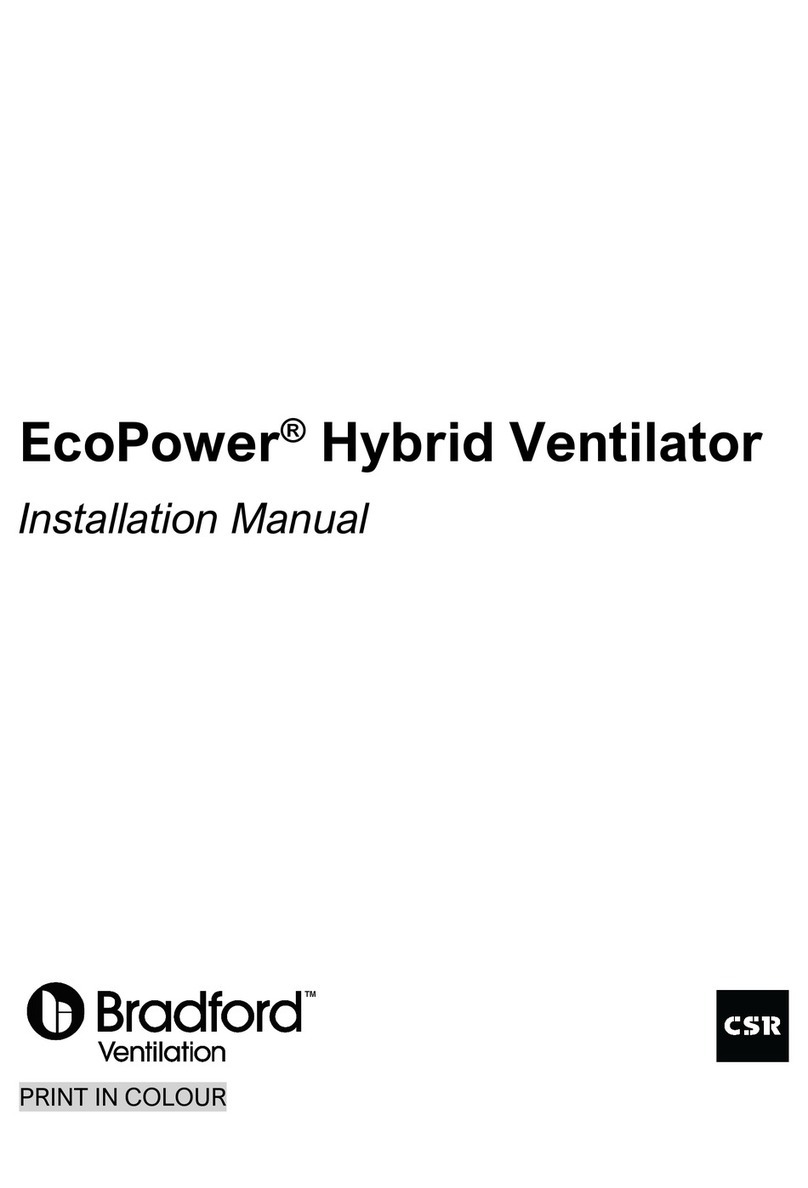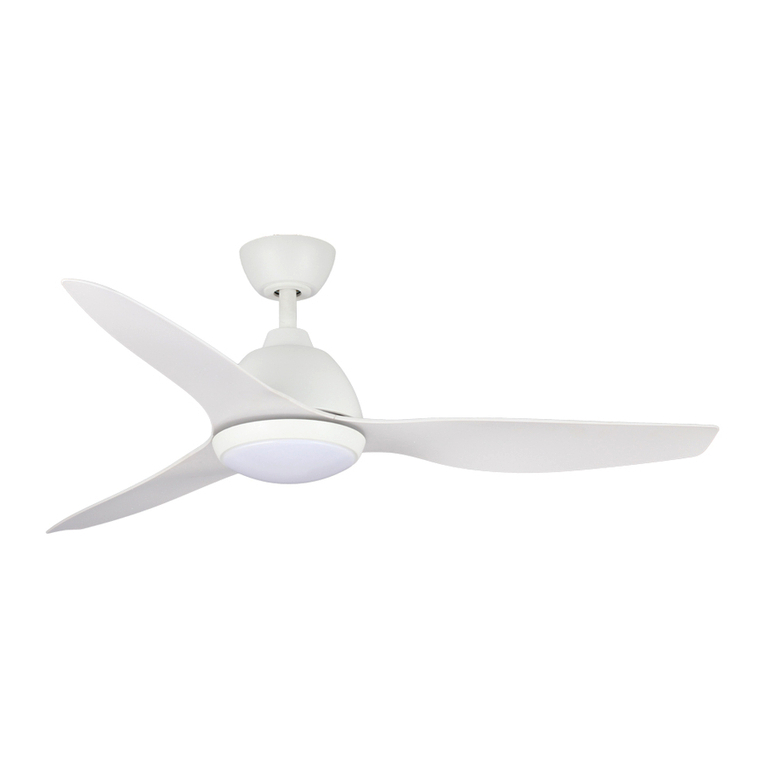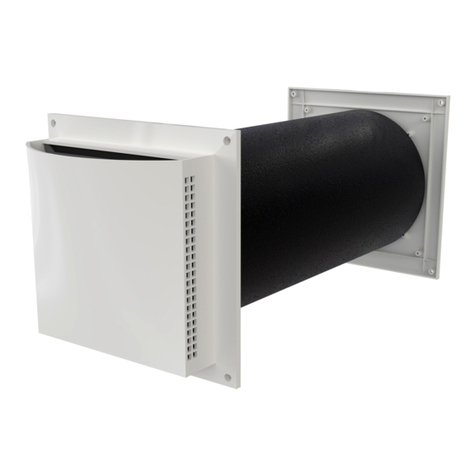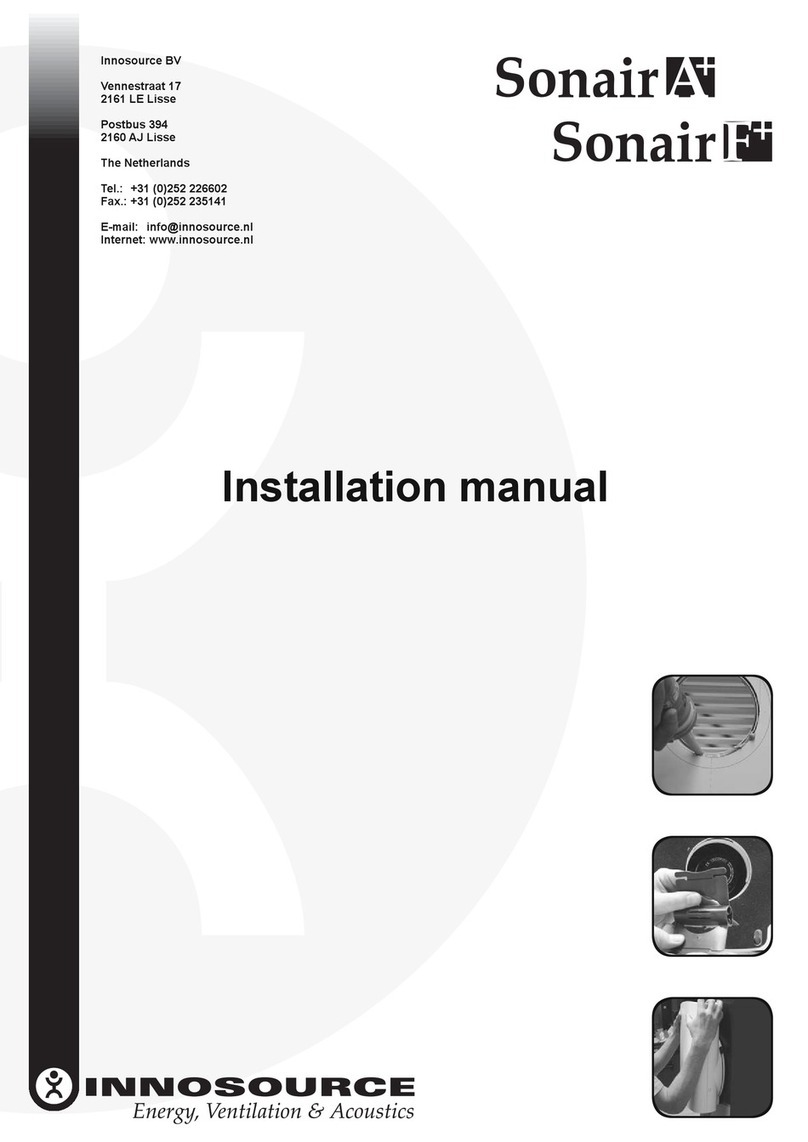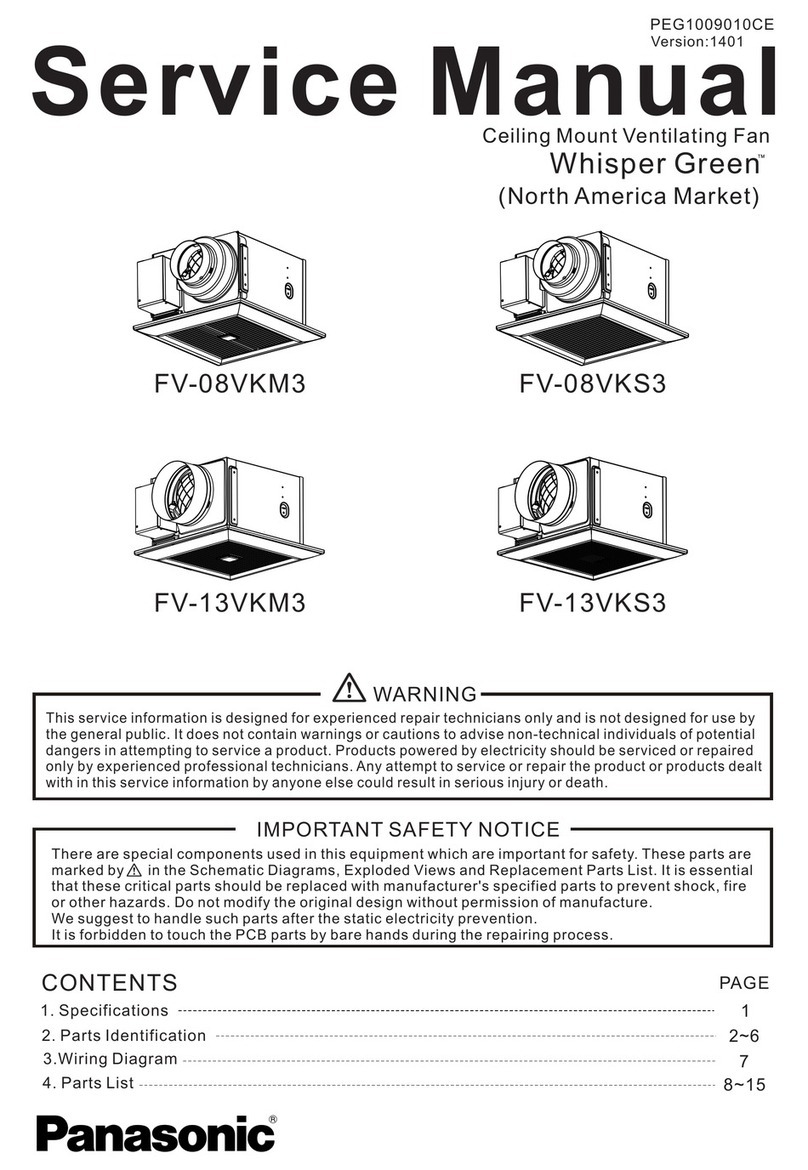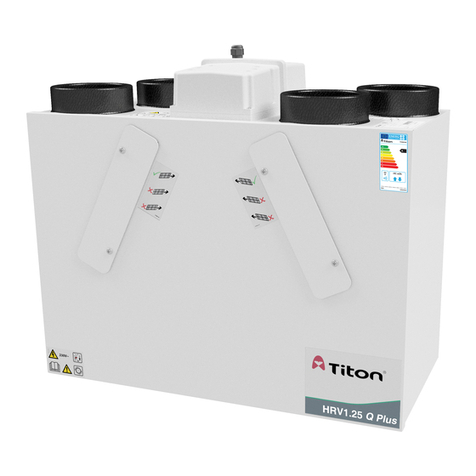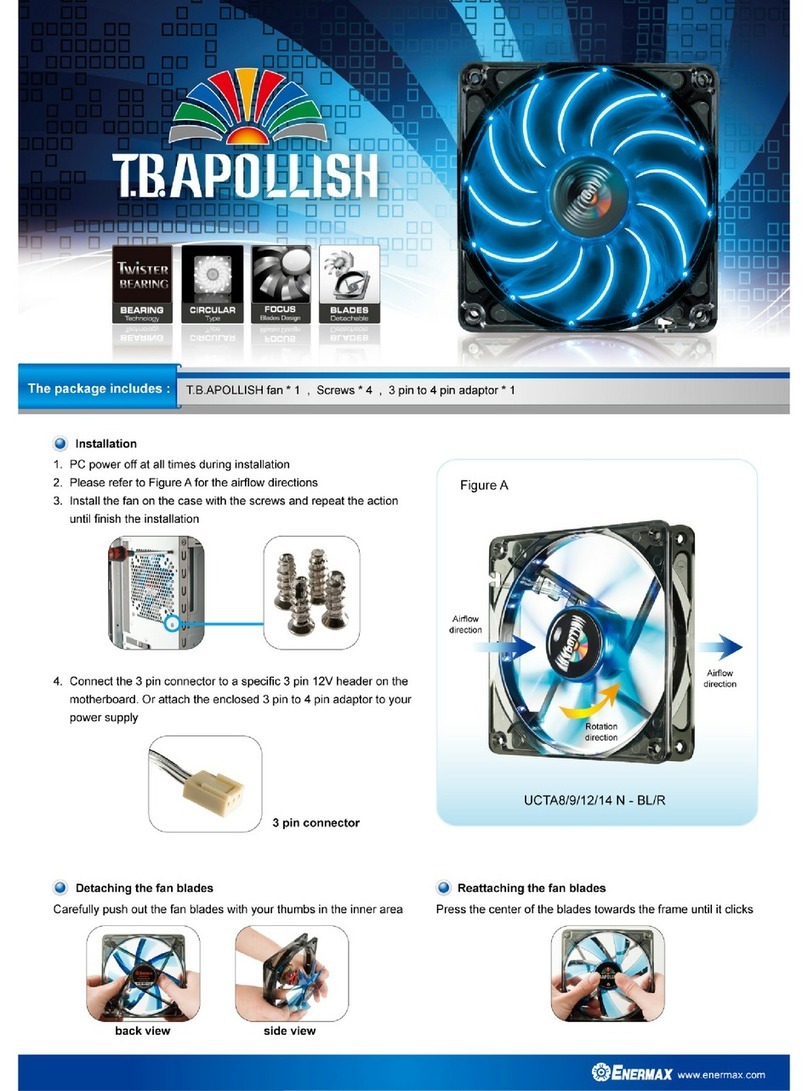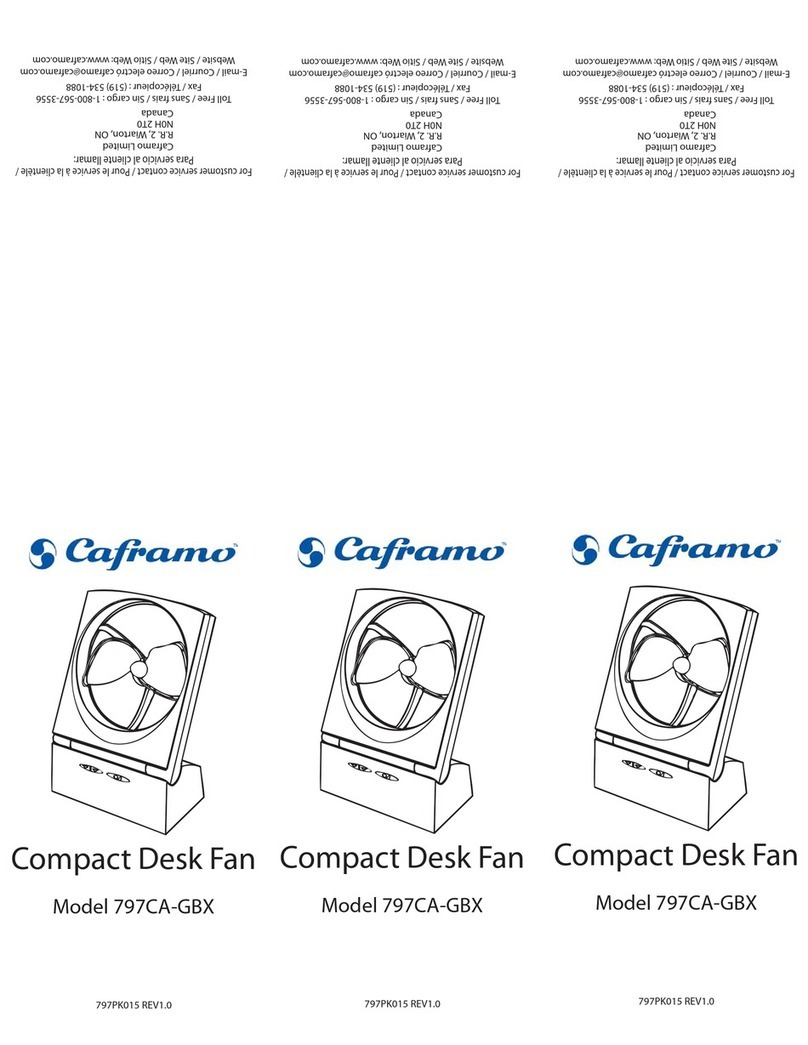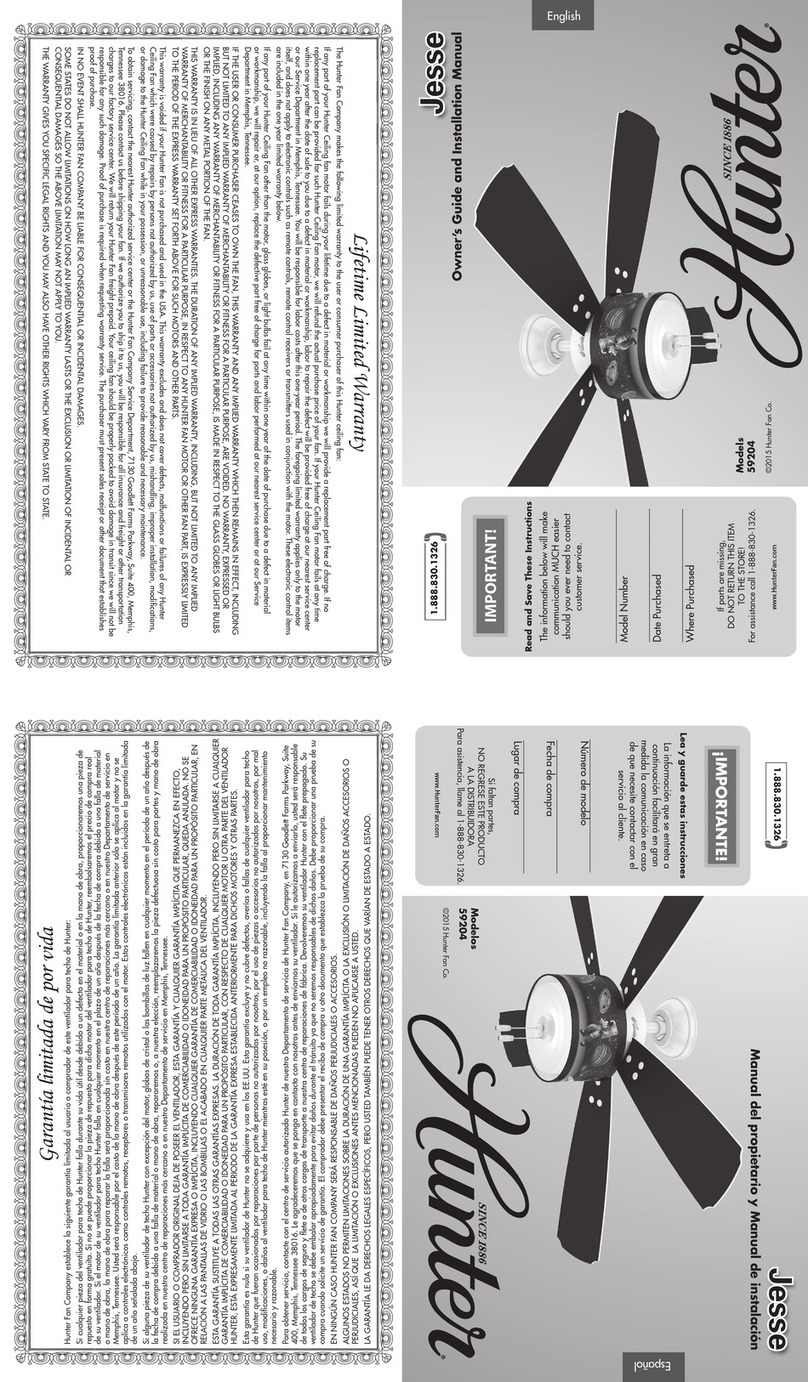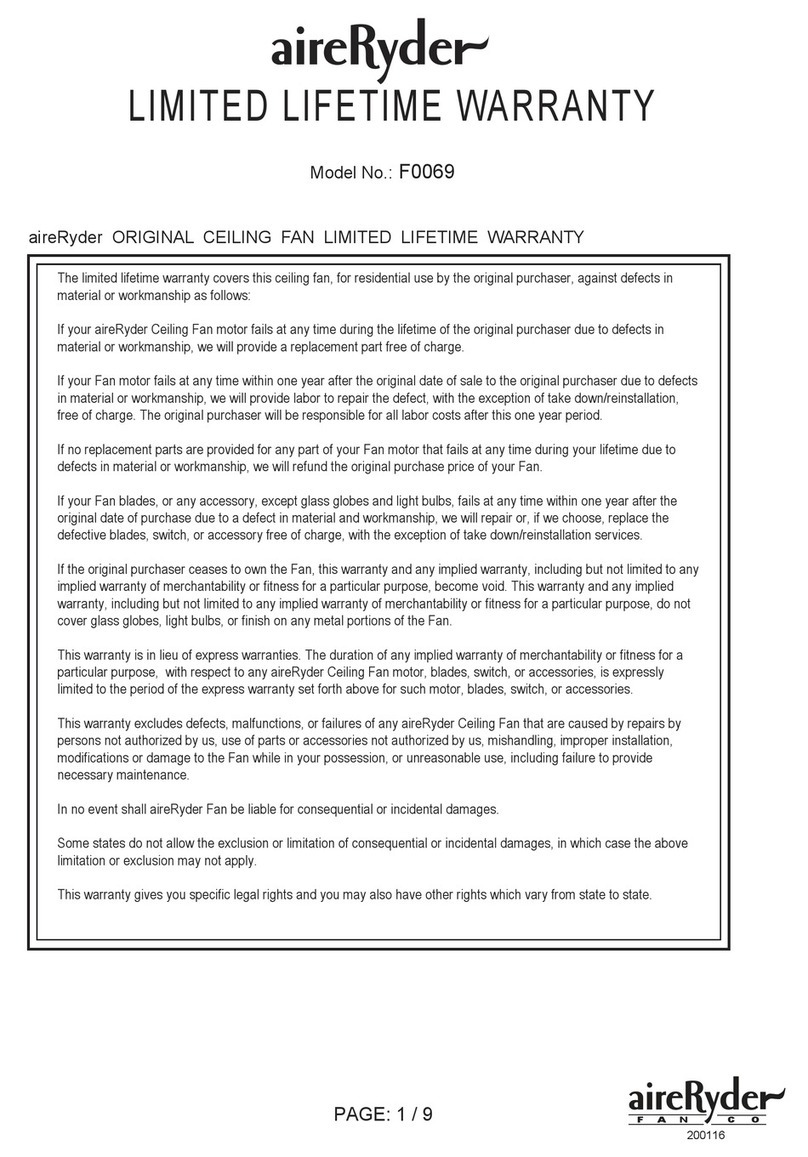Bradford Odyssey H2100 User manual

Installation Manual

2
Item Checklist & Additional Tools Required For Installation
1Ventilator 1
2Valve/Controller/Ducting 1
3Grille 1
4LCD User Interface Panel 1
5LCD Panel Cable 1
6Temperature Sensors 2
7Temperature Sensor Cables 2
8Mains Power Cable 1
9Duct tape Roll 1
10 8Gx12mm Tek Screws 2
11 8Gx25mm CSK Screws 6
12 Installation Manual 1
13 Operations Manual 1
14 Warranty Document 1
Soft Rubber Hammer
Roof Sealant & Caulking Gun
Cable Ties
Cordless Drill & Screwdriver
Marker Pen
Knife (Sarked Roofs Only)
10GTek Screws or Sealed Rivets (Metal Roof Only)
Nibbler or Similar Cutting Tool (Metal Roof Only)
Plasterboard Saw
Timber Saw
Phillips #2 Hand Screwdriver
25mm Hole Saw
Additional Parts & Tools Required (Not Supplied)
Included Parts: Qty:

3
4
6
7
8
9
1
2
3
5

4
Warnings and Important Notices
WARNING: Do not proceed with the installation until you have read
the entire instructions, including these warnings.
INSTALL AT YOUR OWN RISK
The installation of this product may be dangerous and includes the potential
of death, personal injury or property damage. Please be aware of the
following before installing this product.
• Follow any state or territory regulator OH&S guidelines for working
at height (e.g. Roof work), electrical, working in elevated temperatures
(e.g. ceiling space in summer).
• Installation requires climbing and working at heights.
Use caution to minimise risks by:
• Clearing the area below the workspace
• Not walking on surfaces that are slippery, wet or dusty
• Using appropriate equipment (tie off ladders etc.)
• DO NOT attempt to install if you are uncomfortable with working at
heights or on sloping roof surfaces
• There are sharp edges on the ashing, cut tiles, roof sheeting etc.
Take care and wear personal protective equipment when handling
and installing products
• Be aware that the Odyssey once connected to mains power may
start at any time. Do not connect the unit to mains power until the
installation is complete.
• DO NOT attempt to put anything into the running turbine or valve as
this many cause personal injury and/or damage to the unit.
• Be aware of electrical conductors in the roof. If there is any sign of risk
isolate the power before entering the roof space. Be aware that there can
be non-isolated electrical conductors such as mains supply and solar
supply. Note if these are in the roof space and avoid.

5
Warnings and Important Notices
• Be careful to determine that the eave into which the sensor is being
installed does not contain Asbestos. If it is or you cannot determine
make up, then the sensor can only be installed using asbestos
handling procedures by a person trained and/or licensed to
handle asbestos.
IMPORTANT NOTES
• Please ensure that Odyssey is switched OFF from the mains before
conducting any system inspections or repairs.
• DO NOT remove any protection covers. Odyssey’s electronics are not
user servicable.
• The Odyssey is designed for general household ventilation only.
DO NOT use to exhaust hazardous or explosive materials and
vapours.
• DO NOT use in areas contaminated with oil vapour from cooking or
other oils. Oil vapour may cause crack damage, electrical failure or re.
• The Odyssey has an unguarded turbine assembly. DO NOT use in
locations readily accessible to people or animals.
• Only use the provided Controller and Cables, do not attempt to
connect the Ventilator, Valve, Sensor and LCD Display to any other
device other than what is stated in this manual. Failure to do so
can damage the product.
• The Valve/Controller, Temperature Sensors and LCD User Interface
are designed to be used in dry environments. Ensure that these
devices are installed in an area which is dry and not exposed to
water by means of rain and run off.
• Only connect one Valve, two Sensors, one LCD User Interface and
one Ventilator to the Odyssey Controller. DO NOT attempt to connect
any other devices.

6
Installation - Tiled Roof
STEP 1
Select a suitable position
for the ventilator on the roof
no higher than the third
row of tiles down from the
ridge, keeping in mind that
the ceiling grille needs to
be installed in the ceiling
almost directly below.
It is also recommended
that the ceiling grille be
installed somewhere near
the centre of the building,
away from windows or other
openings.
The removal of a tile higher than the third row down from
the ridge may damage the ridge tile pointing and is NOT
recommended.
STEP 2
Position the ventilator in
the desired location to
determine which tiles need
to be removed or cut.
Mark out position and tiles
to be removed or cut.

7
Cut Tiles as required
Installation - Tiled Roof
STEP 3
Remove any complete
tiles as required and also
cut parts of tiles to enable
the collar to pass through
the roof.
STEP 4
Cut & remove a section
of tile batten to clear the
ducting collar as shown.
If the roof is sarked, cut
sarking in a cross and
fold back to give a 410mm
opening.
Tape the corners to the
surrounding sarking with
foil tape to prevent them
fouling the ventilator.
Cut Sarking and Batten

8
Installation - Tiled Roof
STEP 5
Fit the ventilator into
place and ensure
surrounding tiles are
tted securely.
Note that the longer
side of the rain cowl/
cover should be pointing
towards the ridge of the
roof.
Take care to ensure the ventilator cables are passed
through safely down towards the lower side and not
caught on any sharp edges.
STEP 6
Fold and form the front
edge of the ashing to
seal against the tiles
below.
Using a soft hammer,
carefully dress the front
and sides of the ashing
into the shape of the tiles.

9
Fixing Strap
Batten
Screw/Nail
Installation - Tiled Roof
STEP 8
From within the roof
space, pull the aluminium
xing strap that is attached
to the ducting collar across
to the batten near the
bottom side.
Screw or nail x the strap
to the batten to securely
hold the ventilator down.
Turn the rear edge of the ashing upwards to seal against
the tile above and to form a water gutter.
PROCEED TO STEP 16
STEP 7
To ensure a weatherproof
installation, apply a bead
of silicone between the
tiles and the side and front
edges of the ashing.

10
Installation - Metal Roof
STEP 9
Select a suitable position
for the ventilator, keeping in
mind that the ceiling grille
needs to be installed in
the ceiling almost directly
below.
It is also recommended that
the ceiling grille be installed
somewhere near the centre
of the building, away from
windows or other openings.
Slip the top edge of the
ashing under the ridge cap
and mark position.
STEP 10
Remove the ventilator
and cut a 410mm square
hole around the centre of
the position marks.
Ensure that the ashing covers the roof corrugations or ribs
equally and that it is located between roof rafters.

11
Turn Up
Turn Up
Installation - Metal Roof
STEP 11
Turn up the corrugations
or pans on both the low
and high sides.
STEP 12
Place ventilator into
position and temporarily
x with 4 Tek screws.

12
Installation - Metal Roof
STEP 14
Remove screws and lift
ashing to run a bead
of silicone along the
underside of the ashing
along the lower and side
edges shown.
STEP 13
Using a soft rubber
hammer, carefully form
the ashing into the
corrugations of the metal
sheet prole at the lower
edge and sides.

13
Installation - Metal Roof
STEP 15
Secure the ashing to roof
sheeting with at least 13
Tek screws or sealed rivets
along the lower and sides
edges shown.
Additionally x 4 Tek
screws or sealed rivets
evenly spaced around the
opening.
Ensure that ridge cap is
also re-secured down with
suitable screws.
PROCEED TO STEP 16

14
Valve, Ducting & Grille Installation
STEP 16
Locate the round top edge
of the valve into the collar,
ensuring that the 4 pins
locate into the bayonet
slots.
Push the valve up to the
top then rotate clockwise
to lock the bayonet.
Ensure that the controller is facing towards the low end of the
roof and that the cables are routed through the cable slot.
STEP 17
Secure the valve to the
collar in at least two (2)
places, using the screws
provided.
Seal bayonet joint with
duct tape to prevent air
leakage. Screw Fix Collar and ValveScrew Fix Collar and Valve
There are 4 hole locations on the collar that provide
possible xing locations, depending on accessibility.

15
Valve, Ducting & Grille Installation
Screw to Batten
Strap
Cut Small Cable TiesCut Small Cable Ties
STEP 18
Take the pre-xed
exible strap and pull
taut to suitable batten,
xing it with a screw.
If tightening is required
unscrew strap at valve
side, tighten strap and
rex screw.
STEP 19
Cut small cable ties to
release ducting.
DO NOT cut large cable
tie or the ducting will
fall off.
Ensure strap is securely xed to the valve casing.

16
Valve, Ducting & Grille Installation
Approximately
100mm of
Extra Ducting
Length
Ceiling
STEP 21
Locate position for
ceiling grille from under
ceiling and using the
supplied template,
mark out the shape to
be cut.
Using a suitable saw cut
out the hole.
STEP 20
Cut the ducting to
length so that
approximately 100mm
of ducting can hang
down past the ceiling
level.
Ensure that the cut out clears ceiling joists and any pipes
or electric cables.

17
Valve, Ducting & Grille Installation
Fix With Tape
STEP 22
Drop the ducting down
through the cut out so
that it hangs down
approximately 100mm.
Slide the collar of the
ceiling grille frame half
way into the ducting.
Secure the ducting to
the collar using
supplied duct tape.
STEP 23
Place the ceiling grille
frame into hole cut out,
ensuring that the clips are
rotated so they sit along-
side the collar.
Using a Phillips screwdriver
rotate the clips so they
rotate out over the ceiling
material, and then tighten
until they clamp onto the
ceiling.
Ensure that the ceiling grille frame clip mechanisms are
clear of ducting and duct tape.
If the ceiling is too thick use the alternate xing holes that
are provided.

18
Valve, Ducting & Grille Installation
STEP 24
Fit the ceiling grille to
the ceiling grille frame.
The ceiling grille is held in place by magnets and must be
tted so that it aligns with notches in the frame. The grille
can be rotated until it ts into these notches and then the
magnets should securely hold it in place.

19
Temperature sensor and User Interface Panel Installation
25mm Hole
STEP 25
Select an eave on a side of
the building that does not
receive direct sunlight for
the position of the exter-
nal temperature sensor.
Its best to use a southern
facing side. Avoid mounting
the external sensor on a
west facing wall.
Select a location around
the middle of the eave and
drill a 25mm hole for the
sensor.
STEP 26
Connect cable to sensor
and pass cable through
hole.
Note: One temperature sensor needs to be installed on an internal ceiling
and one externally under an eave. Two identical temperature sensors are
supplied for this purpose.
Ensure that the position selected will allow the sensor to reach
and connect to the controller with the supplied 10m long cable.

20
Temperature sensor and User Interface Panel Installation
STEP 28
Clip the cover plate over
the sensor base plate.
STEP 27
Using the two screws
supplied, x the sensor
to the eave through two
of the three holes in the
sensor base plate.
Table of contents
Other Bradford Fan manuals
Popular Fan manuals by other brands
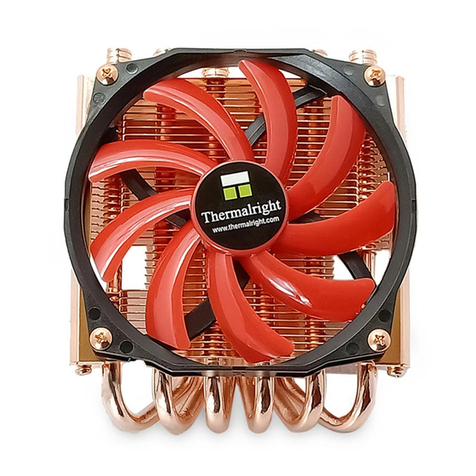
Thermalright
Thermalright AXP-100 C65 installation manual
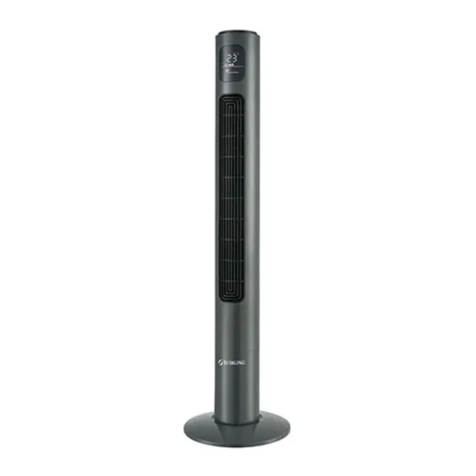
STRILING
STRILING EE-5612 instruction manual

Ruck Ventilatoren
Ruck Ventilatoren DVA Series Assembly instruction
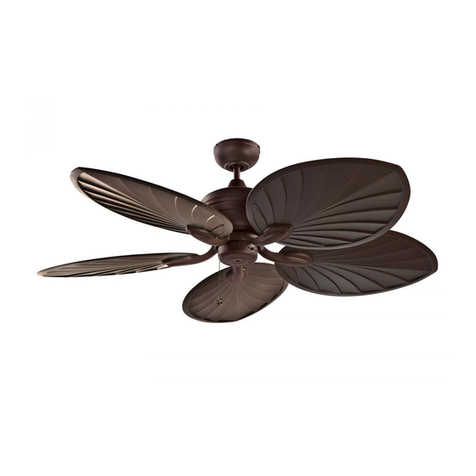
Kendal Lighting
Kendal Lighting AC11152P-ORB/WN installation instructions

Kooper
Kooper 2194486 User instructions

CONCORD
CONCORD Avia 60AV5E Owner's manual and installation instructions


